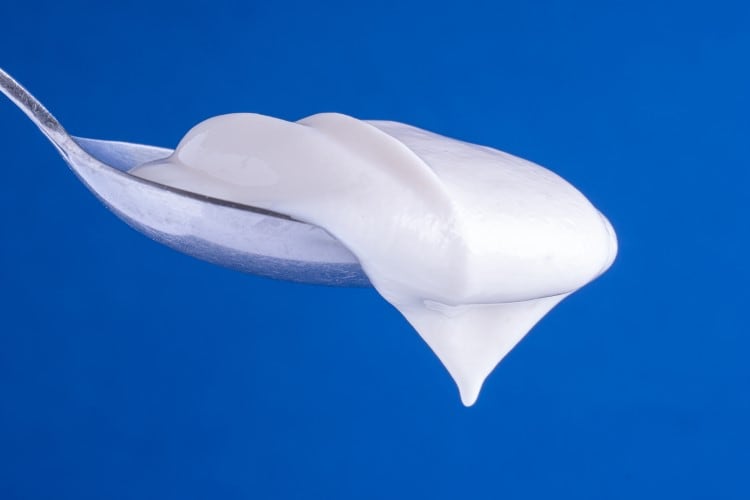There has been no evidence previously that linked the intake of dairy to the chance of pre-diabetes remissions, i.e. a reversal of the condition that precedes type 2 diabetes.
Last week, researchers from the Shahid Beheshti University of Medical Sciences in Tehran, Iran, published the results of a 9-year longitudinal study into how consuming whole-fat dairy products affected the chance of reversing pre-diabetes or developing type 2 diabetes.
In particular, the authors found that full-fat yogurt consumption could be linked to a lower chance of developing diabetes, and an increased likelihood of returning to normal glycaemia – i.e., normal blood sugar levels - for patients who already had pre-diabetes. Other products’ effects on glycaemic health were less clear, however, with contradicting results on low-fat yogurt, cream, butter and cheese consumption.
The research was conducted on 334 pre-diabetic patients, who were part of the ongoing Tehran Lipid and Glucose Study, a community-based prospective study which commenced in 1999. The participants’ data, including biochemical measurements and a dietary assessment, was collected in 2006-2008 with follow-ups taking place in 2009-2011; 2012- 2014, and 2015-2017.
The average age of the cohort was 49.4 ± 12.8 years, and 51.5% were men; the rate of pre-diabetes progression and regression was similar (39.8%), though those who returned to normal glycaemia were younger and had lower blood sugar levels, body mass index and cholesterol ratio.
During the follow-up, the researchers found that participants who consumed high amounts of full-fat dairy products (more than 230g per day) had a borderline significant lower fasting and 2h serum glucose (2h-SG) concentrations over time.
“In our study, the amount of yogurt consumption was meaningfully higher from a dietitian’s point of view in subjects who returned to normal glycemia compared to those who remained [pre-diabetic], and higher intake of yogurt was related to reverting pre-diabetes to normal glycemia.”
The opposite was true for higher cheese intake (more than a single serving per day), which was associated with higher 2h SG concentrations; while high milk consumption was related to lower 2h-SG over time.
As for dairy intake’s effects on reversing pre-diabetes, ‘the chance of returning to normal glycemia was significantly increased’ when 200g of high-fat dairy was being consumed per day.
In particular, higher intake of yogurt appeared more likely to be linked to returning to normal glycemia, while high intake of cheese was more likely to increase the risk of developing type 2 diabetes in pre-diabetic patients.
Overall, the authors concluded that regular dairy intake may increase the odds of pre-diabetes regression to normal glycemia.
Yogurt: a diabetes ‘superfood’
The consumption of dairy staples such as whole fat yogurt appears to be linked with a lower risk of type 2 diabetes in some studies, but researchers are far from clear on why this seems to be the case.
Last month, the Food and Drug Administration concluded there was enough evidence to support a qualified health claim that eating yogurt regularly can reduce the risk of developing type 2 diabetes.
The ruling, which was preceded by five years of petitioning by dairy major Danone North America, means that food producers can now leverage an FDA-backed label claim – but the evidence backing it remains ‘limited’ according to FDA.
Regardless, academic literature supporting whole fat dairy’s positive effects on glycaemic health continues to emerge – though there isn’t scientific consensus on what makes dairy so beneficial.
“The causality and underlying mechanisms of the observed relations between dairy intake and the risk of developing [type 2 diabetes] in cohort studies remain unclear,” the researchers from Shahid Beheshti University of Medical Sciences explain in their paper, adding that no other evidence was available that linked dairy products to the chance of regression from pre-diabetes to normal glycemia.
Existing research on cheese is even more complicated, with some findings supporting that consumption may reduce the risk of developing diabetes while others did not find such evidence.
“A possible adverse effect of high cheese intake on glucose metabolism is supported by evidence indicating that dietary patterns with a high load of cheese consumption increase the risk of gestational diabetes, obesity and abdominal obesity,” the authors summarized.
So why isn’t there scientific consensus on why yogurt appears to be good for glycaemic health? The inconsistent findings, the authors said, could be down to cheese and yogurt’s unique composition, the variety of dairy products available globally, and how these foods are consumed in different cultures – e.g. cheese on a pizza versus fresh goats cheese in a salad.
However, the current findings do suggest that eating dairy regularly could lessen the risk of developing type 2 diabetes or improve the chances of reversing pre-diabetes. The paper also offers some evidence against claims that full-fat dairy could be a risk factor, and supports existing evidence of whole-fat dairy’s protective effects against type 2 diabetes.
Source:
Usual intake of dairy products and the chance of pre-diabetes regression to normal glycemia or progression to type 2 diabetes: a 9-year follow-up.
Bahadoran, Z., Mirmiran, P. & Azizi, F.
Nutr. Diabetes 14, 15 (2024)
https://doi.org/10.1038/s41387-024-00257-7



